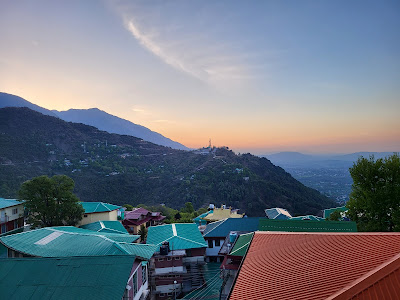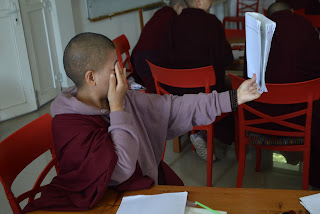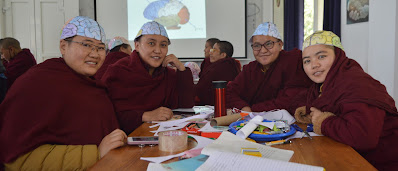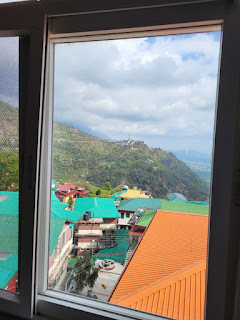The most stressful part of traveling is, well, the actual traveling. Door to door, the trip home from Dharamsala to Seattle took about 43 hours. Here are my notes; all times India:
9:00 am (Wed): Leave Dharamsala by car to Kangra Airport
9:45 am: Arrive Kangra Airport
12:15 pm: Leave Kangra Airport for Delhi
1:45 pm: Plane arrives Delhi [Flight time = 1.5 hours]
2:30 pm: Arrive Delhi Hotel by car
2:30 pm to 12:45 am (Thur): Rest in Delhi Hotel, have meal, watch cricket on TV
1 am: Arrive Delhi airport by car
1 am to 1:45 am: Wait in line to get boarding pass/check bag
1:45 am to 2:30 am: Wait in line to clear passport control
2:30 am to 3 am: Wait in line/clear security
4:05 am: Plane departs Delhi to Dubai
7:30 am: Plane arrives Dubai [Flight time = 3.5 hours]
10:30 am: Plane departs Dubai for Seattle
1:30 am (Fri) [1 pm, Thur, Seattle]: Plane arrives Seattle [Flight time = 14 hours]1:30 am - 2:15 am [1 pm-1:45 pm Seattle]: Wait for bag at Seattle Airport/Clear Customs and Immigration
3:00 am [2:30 pm Seattle]: Arrive home in Seattle
Additional Notes:
1. At Delhi airport: it is important to have a boarding pass to get into the terminal. I did not have a boarding pass, but I did have a copy of my ticket that worked. The security guard gave me a funny look when I showed the ticket, but allowed me to pass.
2. At Delhi airport: give yourself at least 3 hours from the time you enter the terminal to the time you get to your boarding gate. The airport is very crowded and chaotic and you will spend a couple hours waiting to check a bag, get a boarding pass, clear passport control and clear security. Add more time if you have to exchange currency.
3. USA Global Entry saved me at least 45 minutes when I arrived in Seattle. After waiting 45 minutes for my bag to arrive off the plane, I breezed through customs/immigration in about 1 minute using the Global Entry program. There were long lines of people waiting in customs/immigration who did not have access to this progrm.



















































